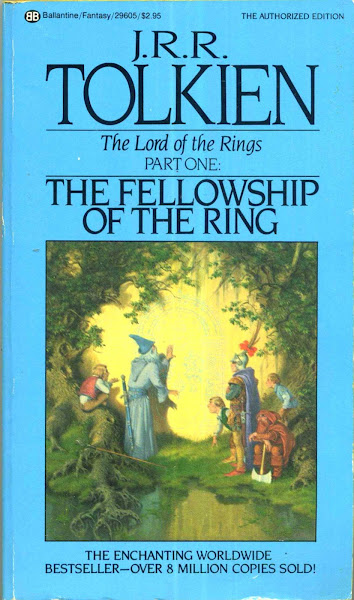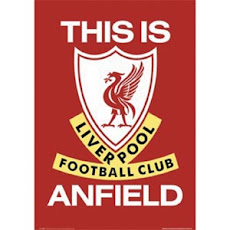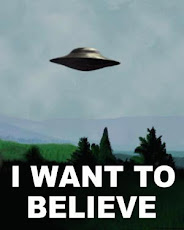(also out in today's issue -- October 9, 2007 -- of the Business Mirror)
The Golden Age
For a man who just endured another tumultuous season, Joe Lipa looks surprisingly dapper. “Hindi naman. Napasarap lang ang tulog,” he explained of his wardrobe – a light yellow golf shirt with khaki shorts that many decades ago when he donned the maroon and green for UP was inconceivable.
“Yes, my, how times have changed,” he laughed.
“Kung walang interview ngayon eh malamang, tulog pa ako. But that’s okay,” added the multi-titled coach who breaks into an easy smile. “I’ve reserved the whole morning for this.”
It’s 10:20 am at Red Ribbon restaurant along Katipunan. Right on the very thoroughfare that goes through the only two schools he’s ever coached.
But before he put the coach’s whistle around his neck, Lipa was an altogether different breed of player – he played both guard and center. “That was a time when not many people stood at six feet tall,” he said drawing from a memory not tapped for ages. “If you were then you automatically played center.”
He let out a smile, perhaps, the first real smile since the summer before Season 70 of the UAAP Season when he pulled off a coup without even trying. Three players from the juniors first runner-up FEU-FERN Socrates Rivera, Dexter Rosales, and Mark Lopez took the LRT Line 2 from Lerma to Katipunan then the Ikot jeep to a dingy old gym at the College of Human Kinetics in UP. Together with another blue, er, maroon chip rookie in former Blue Eaglet Mike Gamboa, the first Atenean since Alfie Manlulo in 1988 to start in UP’s backcourt, it seemed that Lipa’s team had the makings of a darkhorse team that could challenge for the title for years to come.
Lipa played for UP from 1963-66 -- “a lifetime ago” as he described. His teammates were the late Toyota Tamaraws coach Fort Acuna and Orly De Los Santos. “NU had Jun Papa, UST had Danny Florencio, and FEU the Aldanese twins. But UE was clear heads above everyone else because they had Robert Jaworski,” he once more said with a smile at the wave of nostalgia the interview has taken. “He was raw and gangly but he was a very very good player. Being centers, we were matched up against each other. That’s why in the PBA, Sonny could post up players even those who were taller than him. Marunong siya. We played them hard but they always seemed to win. As for UP, it was Fort who was the difference for us.”
So what was it like to guard and match wits with Jaworski?
“Oh, Sonny was really big and strong. I weighed 145 pounds while he was around maybe 165-170. Let’s just say, Sonny had his way, but I also scored on him,” he added with a wink.
The Accidental Coach
In 1980, UP coach Dave Perez suddenly left for Samoa leaving the Fighting Maroons without a coach. The university asked Lipa, but he politely told the chancellor that “I wasn’t his best shot.” Although he did recommend Acuna who said yes. Barely two months before the opening of the season, Acuna passed away leaving the school and the team dumbfounded. UP President Ed Angara told Lipa that they’ve “exhausted all options and maybe he should stay as an interim coach for only a season while they search for another.”
Lipa agreed, but there were moments when he wished he didn’t. The Maroons were battered as they finished at a 2-10 record. “I was embarrassed and asked the university if they were willing to give me another chance.”
UP agreed and Lipa repaid that trust by bringing the Maroons to the finals where they were mangled badly by the UE Red Warriors. The following year his team featuring Duane Salvaterra, Joey Mendoza, Eric Altamirano, Mon Celis, and Ricky Dandan made it back but lost to FEU which was bannered by Glenn Capacio, the late Jack Tanuan, and Harmon Codinera.
“San Beda’s basketball program wasn’t as organized then as it is now,” said Da Nose whose UP team always featured a lot of former Red Cubs in Salvaterra, Mendoza, Altamirano, Ronnie Magsanoc, Dondi Roque, and Mon Celis. “I remember a lot of them coming over and saying that they wanted a UP education.”
But it would take the addition of one final Red Cub for Lipa and UP to get over the hump and win one for the University.
“Benjie Paras was recruited by four schools – San Beda, Ateneo, UP, and La Salle,” recalled Lipa. “La Salle made the biggest pitch to him and everyone thought he’d be going there. I only said two things to Benjie – I promise you a very good and all-around education that will serve you well after your playing days are over and teach you to be a good person, and two, despite my limited capacity, I will turn you into the best center in the land.”
That was Lipa’s only sales pitch and he thought that he lost in the Paras sweepstakes for he never made contact with him for weeks after that initial encounter. But on the first day of training for the 1986 season, Paras walked into the gym and everyone clapped. “If you ask me, maybe Paras’ closeness to (Joey) Mendoza helped, but I wouldn’t know.”
Seven months later, Maroon Pride was at fever pitch and everyone was still clapping as UP ended their long title drought when they beat Jerry Codinera’s UE team for the 1986 championship.
Lipa walked off into the sunset a champion. Although the university asked him to stay, he knew he was ready to move on. “After those first few years, my deal – a handshake was all it took – was that I will step down after leading the school to a championship. And I am a man of my word.”
The fiery style of Lipa inevitably drew comparisons to Indiana University’s Bobby Knight, a force of nature if there was ever one. “I admired Knight for his intelligence and the discipline of his system. My fraternity brothers and the university sent me to Indiana for a week to learn and observe from Knight and I came away very impressed. But I can’t say that he wholly influenced me. What I learned then was an extension of my personal philosophies. Knight’s teachings strengthened them. You learn from everyone you come into contact with. Maybe it’s also because that most coaches at that time preferred to sit back and issue instructions during timeouts. Well… I was different,” he recounted with a laugh. “I am a very intense person and if that shows on the court -- it is to drive home a point.
If the UP men’s basketball team has been closely identified with Lipa’s fraternity, Sigma Rho, it is because they are the team’s biggest supporters. “They are basketball fans who know and understand the game,” explained Lipa of his brods’ support. “Some played also for the school like Sigfred Guerrero while others like Atty. Boy Reyno and Victorino Fernandez love to watch even when we aren’t winning. By the same token the supporters of Ateneo, as it is said, win or lose…”
Man of the World
After Ron Jacobs revitalized Philippine basketball on the international stage, he passed the baton to Lipa who had left UP. At the height of the 1986 People Power Revolution, Jacobs gave Lipa an endorsement, “you’re the best person to replace me.” The bulk of the powerful Northern Consolidated Cement team had turned pro so the national team was in dire need of fresh blood. With the Seoul, Korea Asian Games around the corner, some were saying that given the time left maybe it wasn’t in our best interests to send a team.
But Alvin Patrimonio, Jack Tanuan, Allan Caidic, Glenn Capacio, Dindo Pumaren, Samboy Lim, Jerry and Harmon Codinera, Jojo Lastimosa, Elmer Cabahug, and Ronnie Magsanoc were among those who answered the call. “For months, the team suffered,” said Lipa of those dark days when the hastily composed team suffered several losses in tune-up games. “But maybe someone up there loves us so we wound up with a bronze against all odds.”
The following year, in 1987, Lipa piloted another hastily-formed RP Youth Team – composed of Benjie Paras, Nelson Asaytono, Bong Alvarez, Zaldy Realubit, Eric Reyes, Joey Guanio, Jun Reyes, Mar Anthony Magada, Arnold Adlawan, Bobby Jose, Dick Bachmann, and Romulo Orillosa – to a second place finish to China in an exciting game at the Rizal Memorial Coliseum.
Lipa seemed to have that Midas touch as his teams won on the national level to club competition. Right before he made his much anticipated jump to the PBA, his Philips Sardines team in the Philippine Amateur Basketball League (the forerunner of today’s Philippine Basketball League) led by Paras and Jun Reyes defeated Magnolia Ice Cream that had Asaytono and Pumaren. “Benjie from the moment he stepped on the court was a special player,” said Lipa of the player who helped him and State U get over the hump. “I had the good fortune of seeing him grow from a boy into a man, and I wish I could take all the credit, but he was already very good. He is definitely one of our all-time greatest players.”
The Professional Conundrum
Many see the old mentor as stubborn, too old school and perhaps, unable to adapt to the modern game. From his years in UP to the national team and PABL teams, he enforced his brand of motion offense and man-to-man defense. While he found much success in the amateur level, the pro game was altogether another. “It was frustrating because I tried to insist on an amateur style. Even defense seemed to be unpalatable to lots of players,” said the coach. “It was hard too because many made more money than the coach so they didn’t listen.”
The highlight of Lipa’s first year was his longtime player, Benjie Paras, romped away as the first-ever player in the PBA to win the Rookie of the Year and Most Valuable Player plum in the same season. Arlene Rodriguez inherited Lipa’s talented crew that won a title the following year.
Even his last stint in the pros with Fed Ex following a successful tenure as coach of Ateneo De Manila was frustrating. Team management forbade the use of zone defense and mandated a running game while playing the entire roster for every time out. “There are times during a game when you simply cannot run or use any player. But of course you try to follow. It is very hard to focus on the game when in the back of my mind, I am thinking of when to field players and you’re trying to run when the circumstance dictates that you mustn’t. I am from a bastion of idealism,” he said of his old school ways. “I can’t compromise that idealism with basketball today wherein everything is a business proposition. It was very hard coaching there.”
The Other Side of Katipunan
Former Blue Eagle tapal king Ricky Palou of Ateneo’s 1969 NCAA champion team, has always been one of Lipa’s admirers. As far back as 1988, Palou had asked Lipa if he was willing to take over from Cris Calilan who joined the coaching staff of Purefoods in the PBA. But with his responsibilities to the national team and later with Shell, Lipa said that it wasn’t the time.
Ten years passed before Palou once more made the entreaty, “Ngayon hindi ka na makakatanggi.”
Lipa met with Ateneo’s then-VP for Planning Fr. Tito Caluag and he came away convinced of his sincerity and his plans. “In my heart of hearts I felt elated,” recalled Lipa. “If a visionary like Fr. Tito and a great basketball guy like Ricky feel that way about my coaching then there’s no way I can say no.”
There was some resentment in the State University that Lipa had left them, but it is something he refutes. “Of course you know that it’s not true,” said Lipa who remembered the betrayal that marked his second go-around with UP. “They know what they did which is much like what Judas did to Jesus. But my fraternity brothers understood that a coach’s services should be available to everyone.”
After more than a decade of mediocrity Ateneo decided that it had enough and went about restructuring and revitalizing its basketball program. “We identified three key areas that would bring Ateneo back to prominence, one, better recruitment; two, improving the attitude of the players, and three, developing the homegrown program. With regards to the seniors team, my mandate was that in year one, we’d have a winning record, by year two we’re in the final four, and year three, we will at least make it to the finals.
“By year one we had already surpassed expectations. But even then there were rumors that people were calling for my head.
Some said that they didn’t like the motion offense that I was running, then later they were upset that we couldn’t beat La Salle’s press, and then even when I raised my fist after the game to join the alma mater, may nagsasabi na ‘bakit nagtataas ng kamay ‘yan eh hindi naman siya Atenista.’ I asked Fr. Tito about this and he said that he was a part of the community and I had all the right. But I didn’t anymore after that – parang damned if you do, damned if you don’t.”
After the disappointing final four loss to FEU in 2000, the calls for Lipa’s head got louder, but Fr. Caluag and the players stood by their coach. “One time, Fr. Tito told me, ‘coach tingnan mo mga bata.’ And when I saw them wearing patches (that had I LOVE JOE written on them), it strengthened my belief that we were doing something right.”
“In my last year, we extended La Salle to a game three and everybody was saying that keep it close and we have a chance. We were up by double figures at one point and LA Tenorio was playing really well. Then we decided to give the ball to Rico (Villanueva) but it didn’t work the way we envisioned. And so we lost. And in that very last game, I raised my fist.”
Lipa thinks about the loss – one of his most painful – from time to time, but he uses it as motivation to continue to give back to the game that has been good to him. Although he feels a little proud that the team he had put together finally won the big one the following season under Joel Banal, he bears no ill will. If anything, one of his regrets is that two of his boys, point guard Paul Tanchi and shooting guard Rainier Sison weren’t a part of the 2002 championship squad. “Those two are very good boys and intelligent basketball players. You can’t ask enough of them because they played to the best of their abilities every time out. And Paul and Marco (Benitez the team’s reserve guard) also wrote me some very touching letters. I'm proud to have coached them. We didn’t win, but those years are a memorable experience.”
“UP taught me how to be a man, but Ateneo taught me how to be a better Christian.”
"Anak ng Pongalangala"
“Just as there are good players, there are bad players. And just as there are good referees, there are some really bad ones.” There is not one coach who doesn’t hesitate to give a referee a piece of his mind when faced with spotty officiating. The fiery Lipa has been known to get teed up by referees after a blistering tirade and his trademark pongalangala.
Ah, the P-word. It has become a by-word in basketball circles where Lipa’s influence extends. If you ask all his former players of any memories of their coach, the p-word will surely be mentioned.
Not many people know it but Lipa’s former college teammate Pong Castro has been immortalized for eternity. Castro was one of those players who was forever present in the coach Fely Fajardo’s litany of mistakes during timeouts and he would exclaim, “Pong, anak ka ng ngala-ngala.” Lipa refined it and from there it gained a life of its own.
His players used to snicker at it, but referees would tee him up.
When I was head of officiating in the UAAP, I would tell the referees that teams don’t like to lose to a whistle and that they should officiate the right way. The problem is they like to interpret FIBA rules their own way. After a first call that I would think wasn’t good, I’d call their attention. After a second, I would be more forceful. One time someone gave me the excuse that ‘we’re all human’ and I replied that ‘I wasn’t born yesterday.’”
“Game fixing and point shaving is something hard to prove,” Lipa said emphatically. “Maybe you see it happening but you can never prove it. You can smell it but you don’t see it.”
“Gambling per se is not bad – maybe in the spirit of fun. But when you try to influence the outcome of games then that’s something else.
Lipa also decried the rapid commercialization of the college game that has led to external forces trying to corrupt the game. “The National Sports Association (NSA) should have control over these referees as well. It’s very sad that the UAAP or NCAA or any other league for the matter – do not have control over them. One referee who was banned from one league can just go to another. Some have no qualms about their reputation. All their backgrounds must be thoroughly checked. Maybe it’s okay for a rookie referee to make a mistake but for veterans? ‘Yan ang kasabihan na “pinaglalaruan yung laro.”
Strike Three at the State University
A few years ago, the Dean of the Human Kinetics college was asked to prepare a program that would culminate with a basketball title in time for the school’s centennial in 2008. And the school’s powers-that-be decided that the best coach to lead them there was the last one who brought her a title. Lipa had initial misgivings, but the appeal of being a factor in the celebration was too huge to ignore.
Following the removal of Lito Vergara, the new coaching staff (which included former players and assistants Jojo Villa and Ramil Cruz) quickly set to work since there wasn’t much time. “I was surprised during that first day because Migs (De Asis), Martin (Reyes), and Woody (Co) were there,” recalled coach. “I told them the very same thing that I told Paras years ago and we talked of all our expectations. Any time you want to compete, funding will always be a problem. And at the university we don’t have much.”
Even before the start of the season, the coach felt that there were already forces at work trying to destabilize the team. Although the off-season went well when they acquired some players who would immediately help the team, but the glaring weakness was its hole in the middle. No one foresaw the incredible tailspin of a team that was at least thought to be a dark horse contender. With every loss and blowout loss, the rumors and whispers of Lipa being axed at the end of the season got louder. “Even within my own staff, one was spreading rumors outside,” said the coach of the collateral damage of a 0-14 season. “What happened was that there were some people who requested favors that I cannot give for the good of the team and had that happened some players who are with the team now will not be playing. I decided to go with what was right for the university. Unfortunately for us it didn’t turn out that way.”
A few days after the end of the season, Lipa met with the Dean of the College of Human Kinetics Hercules Callanta, his former team trainer from college to the pros who he now has an estranged relationship. The meeting approximately lasted three minutes at which the Dean was supposed to have said, “I will go straight to the point. Coach, I’ve considered all factors and decided to recommend to the chancellor that your services be terminated.”
The embattled coach somehow expected and simply said, “If you think that’s a fair decision then live with it for the rest of your life. And please give my thanks to the president and the chancellor for the opportunity to serve the university.” With a handshake he walked out, but not before he turned his back on the school’s sports director who he knew to be one of those behind his ouster.
“I wasn’t even shown a copy of the evaluation that they said the boys (his players) would like a change. The boys went up to me and said that they gave me a vote of confidence. They were positive they never said anything negative.”
Final Time Out
Today Lipa spends time with Ging, his wife of the last 25 years; “make up time for everything that was lost.” Despite his age, he still hopes to find some way to be involved in basketball, “the sport that has been good to him.”
If he has one more regret it is his insistence on a style and old school values that are lost in today’s high-tech world. “Back in the ‘80’s, players were more focused; there were lesser distractions. Now they have cellphones that they fiddle around with all the time. Their night life is a lot different and recruitment of players is a lot more competitive.”
“College players shouldn’t be influenced by anyone outside the team. Nor should they have a manager at this stage of their career. It should be just the coach since we spend more time with the individual than they do with their parents. But it’s hard when you’re also up against influential people who pamper their athletes. They should be managed like men. This is why I was on the same boat with Fr. Tito.”
“I am from a bastion of idealism; they taught me how to be a man and I will always be a good son of the university.”
We finished our long talk at 1:20 pm. After a slice of caramel cake for dessert, we walked out into a hot afternoon along Katipunan Avenue, the one thoroughfare that goes through the only two schools he’s ever coached.
Tuesday, October 9, 2007
Smokin' Joe - A Conversation with one of the Greatest Filipino Coaches of Our Time
Subscribe to:
Post Comments (Atom)









Nice article. Thank you! My uncle IS awesome - we've all thought so.
ReplyDeleteYou're welcome.
ReplyDelete